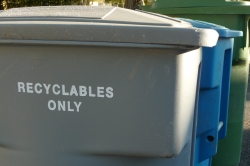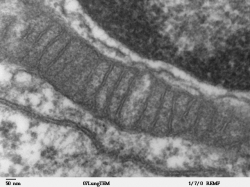Watch as great big trucks dump our garbage into a landfill. Now watch as flies eat and lay eggs in that trash. Watch as a cow eats grass and then leaves a patty behind. Now watch as mushrooms grow out of it. Life is all about living things using things that other living things do not need. One living thing's trash, or waste, becomes another living thing's food. Believe it or not, it's no different with the food people eat or even the air we breathe! Let's find out how your body turns waste from other living things into the stuff you need to live.
Ever wondered why a beautiful picture of a forest makes you sigh? That may be because we breathe the gas that plants throw away. That's right, the air you take into your lungs is plant garbage. When plants turn sunlight into sugar, they make oxygen. They do not need it, though. It's like the way you throw away the shells when you eat peanuts. Plants let this oxygen out into the air and then we breathe it in.
What happens to a soda can when you throw it in a recycling bin? It's crushed so it can become something new. Your body does the same thing with the air and food it takes in. It needs to turn plant garbage into stuff you can use. When your body
breaks down something it makes it smaller so you can use it. You use the air you breathe to break your food down into energy you can use. Air helps your body make thirteen times as much energy from food than you would make if you did not use air.

Are you telling me my body is like a recycling bin?
Air is only half of what you need to make the energy you need to live. Luckily for us, plants also give us the other half. We just have to eat them first.
Glucose is a sugar that your cells use to make energy, and you get it by breaking down the food you eat. Without food, the air you breathe would be like an airplane with lots of wind to glide on, but no gas to keep going.
Breathing and eating are the easiest things in the world, but how does your body then turn oxygen and glucose into energy? There are special cells that take on this very job.
Mitochondria are very small parts of your cells that use pieces of the air and sugar to make the energy you need to live. Think of them as your own batteries. You can charge them by eating food and breathing clean air.

Mitochondria, not really that attractive.
That soda can you threw in the bin does not stay crushed. It's taken to a place where they build it back up to be used as something new. So now that we have broken down sugar and air into things we can use, what happens next?
Cellular respiration is when your cells turn air and sugar into energy you can use. Think of that can changing from a smashed piece of metal into something new that can now hold orange juice.
Anywhere you look, you see energy being used. Watch that cat leap over the fence. Watch that girl skate across the parking lot. Watch that plant stretch toward the sun. They could not do this without the work of their mitochondria. Every time you eat, every time you breathe in, you charge your batteries.
References:
Science for Kids. "Mitochondria." Kidipede, 2011. <
http://scienceforkids.kidipede.com/biology/cells/mitochondria.htm>
Kids Research Express. "Cellular Respiration." KRE, 2012. <
http://kidsresearchexpress-5.blogspot.com/2008/08/cellular-respiration.html>
Biology 4 Kids. "Mitochondria: Turning on the Powerhouse." Biology4Kids, 2010. <
http://www.biology4kids.com/files/cell_mito.html>